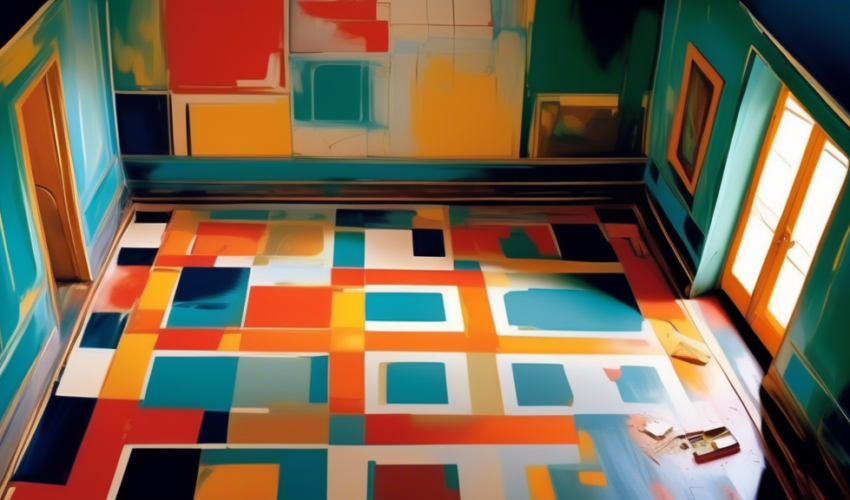Exploring Painted Floors: Advantages and Disadvantages
Painted floors, once a hallmark of traditional Scandinavian and colonial interiors, have made a significant comeback in modern home design. This resurgence is attributed not only to the compelling aesthetic appeal they offer but also to their practical benefits. However, like any design choice, painting floors has its advantages and disadvantages. This article delves into the key aspects to consider when exploring painted floors for your home.
Advantages of Painted Floors
One of the primary advantages of painted floors is the endless creativity they allow. With a wide range of colors, finishes, and patterns available, homeowners can tailor their floors to match their unique style preferences. This versatility can transform an otherwise bland space into a vibrant and inviting area. Additionally, painting is an excellent way to revitalize old, worn wooden floors that may be too damaged to be restored to their original condition.
Cost-effectiveness is another significant benefit. Compared to the expense of installing new flooring, painting existing floors is relatively inexpensive. This makes it an attractive option for those on a tight budget. Moreover, the process of painting floors is less labor-intensive than floor replacements, which translates to lower labor costs if professionals are hired for the job.
From a practical standpoint, painted floors offer ease of maintenance. High-quality floor paints are durable and resistant to the wear and tear of daily life. Spills can be easily wiped up, and the surface can be kept clean with regular sweeping and mopping. Additionally, when the floor eventually shows signs of wear, a fresh coat of paint can easily be applied, making it look as good as new.
Disadvantages of Painted Floors
Despite the advantages, there are also drawbacks to painted floors. The durability of painted floors can be a significant concern, particularly in high-traffic areas. Even with the toughest paint, floors can chip, scratch, or wear over time. This is especially true for wooden floors, where the natural expansion and contraction of the wood can cause cracks in the paint.
Another consideration is the preparation and application process. For the paint to adhere properly and last, the floors must be meticulously prepared. This involves cleaning, sanding, and priming the floors, which can be a time-consuming and labor-intensive process. The actual painting process also requires care and attention to detail to avoid streaks, bubbles, and other imperfections.
Moreover, painted floors can have limited aesthetic appeal to potential homebuyers if you plan to sell your home in the future. While you may love the bold statement of a brightly painted floor, others may not share your enthusiasm. This could potentially impact the resale value of your home or limit its marketability.
Conclusion
Painted floors can be a cost-effective, versatile, and striking design choice for those looking to personalize their living spaces. While they offer a unique aesthetic and practical benefits, it’s essential to consider the potential drawbacks, such as durability concerns and the intensive preparation process required. Weighing these advantages and disadvantages can help homeowners make an informed decision that aligns with their budget, lifestyle, and design preferences.

